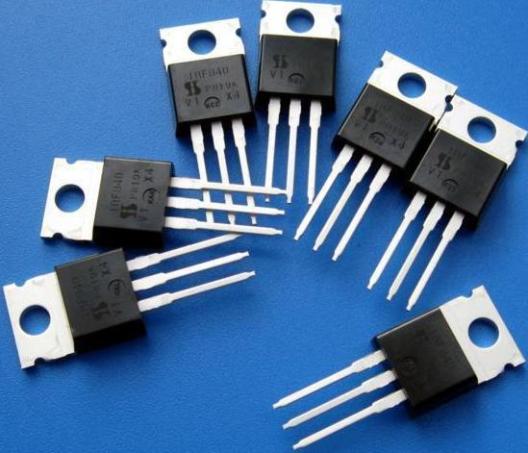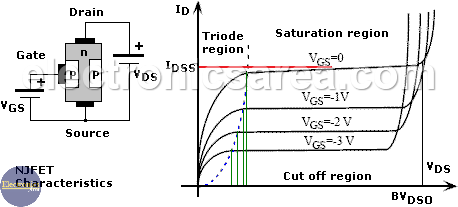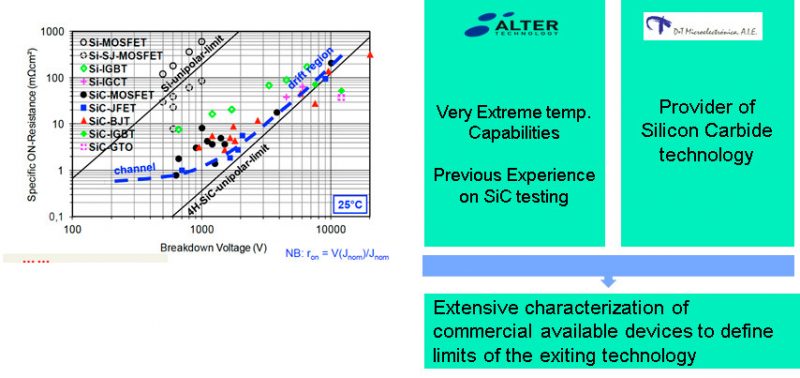
Jfet Mosfet Ppt
A P-Channel MOSFET is a type of MOSFET in which the channel of the MOSFET is composed of a majority of holes as current carriers. When the MOSFET is activated and is on, the majority of the current flowing are holes moving through the channels.
Basic Mosfet Circuits
This is in contrast to the other type of MOSFET, which are N-Channel MOSFETs, in which the majority ofcurrent carriers are electrons.
This EzEd Video explains - Field Effect Transistors- Types of FETs - JFET - MOSFET- MOSFET as a switch. A JFET and low-voltage MOSFET in a cascode configuration is shown in Fig. The MOSFET is a normally off device, and the JFET is normally on. The JFET requires negative voltage to turn off. From a steady-state perspective, the operation of the cascode circuit.
Before, we go over the construction of P-Channel MOSFETs, we must go over the 2 types that exist. There are 2 types of P-Channel MOSFETs, enhancement-type MOSFETs and depletion-type MOSFETs.
A depletion-type MOSFET is normally on (maximum current flows from source to drain) when no differencein voltage exists between the gate and source terminals. However, if a voltage is applied to its gate lead, the drain-source channel becomes more resistive, until the gate voltage is so high, the transistor completely shuts off. An enhancement-type MOSFET is the opposite. It is normally off when the gate-source voltage is 0V(VGS=0). However, if a voltage is applied to its gate lead, the drain-source channel becomesless resistive.
P-Channel MOSFET Basics. A P-Channel MOSFET is a type of MOSFET in which the channel of the MOSFET is composed of a majority of holes as current carriers. When the MOSFET is activated and is on, the majority of the current flowing are holes moving through the channels. JFETs and MOSFETs are quite similar in their operating principles and in their electrical characteristics. However, they differ in some aspects, as detailed below: MOSFET vs JFET. JFETs can only be operated in the depletion mode whereas MOSFETs can be operated in either depletion or in enhancement mode.In a JFET, if the gate is forward biased, excess- carrier injunction occurs and the gate. MOSFET to Switch LED. Most of the circuits use MOSFET as switch compared to JFET due to the advantages offered by it. We can also use switching circuit (to operate the load at particular switching frequency) for the JFETs and MOSFETs for getting the PWM signals based on the load requirements.
In this article, we will go over how both P-Channel enhancement-type and depletion-type MOSFETs are constructed and operate.
How P-Channel MOSFETs Are Constructed Internally
An P-Channel MOSFET is made up of a P channel, which is a channel composed of a majority of hole current carriers. The gate terminals are made up of N-type material.
Depending on the voltage quantity and type (negative or positive)determines how the transistor operates and whether it turns on or off.

How a P-Channel Enhancement-type MOSFET Works
How to Turn on a P-Channel Enhancement Type MOSFET

To turn on a P-Channel Enhancement-type MOSFET, apply a positive voltage VS to the source of the MOSFET and apply a negative voltage to the gate terminal of the MOSFET (the gate must be sufficiently more negative than the threshold voltage across the drain-source region(VG
So with a sufficient positive voltage, VS, to the source and load, and sufficient negative voltage applied to the gate, the P-Channel Enhancement-type MOSFET is fully functional and is in the active 'ON' mode of operation.
How to Turn Off a P-Channel Enhancement Type MOSFET
What Is Jfet Mosfet
To turn off a P-channel enhancement type MOSFET, there are 2 steps you can take. You can either cut off the bias positive voltage, VS, that powers the source. Or you can turn off the negative voltagegoing to the gate of the transistor.
How a P-Channel Depletion-type MOSFET Works
Jfet Mosfet Boba Fett
How to Turn on a P-Channel Depletion Type MOSFET
To turn on a P-Channel Depletion-Type MOSFET, for maximum operation, the gate voltage feeding the gate terminal should be 0V. With the gate voltage being 0V, the drain current is at is largest value and the transistor is in the active 'ON'region of conduction.

So, again, to turn on a P channel depletion-type MOSFET, positive voltage is applied to the source of the p-channel MOSFET. So we power the source terminal of the MOSFET with VS, a positive voltage supply. With a sufficient positive voltage, VS, and no voltage (0V) applied to the base, the P-channel Depletion-type MOSFET is in maximum operation and has the largest current.
Sic Jfet Mosfet
How to Turn Off a P-Channel Depletion Type MOSFET
To turn off a P-channel MOSFET, there are 2 steps you can take. You can either cut off the bias positivevoltage, VDD, that powers the drain. Or you can apply a negative voltage to the gate. When a negativevoltage is applied to the gate, the current is reduced. As the gate voltage, VG, becomes more negative, the current lessens until cutoff, which is when then MOSFET is in the 'OFF' condition. This stops a large source-drain current.
So ,again, as negative voltage is applied to the gate terminal of the P channel depletion-type MOSFET, the MOSFET conducts less and less current across the source-drain terminal. When the gate voltage reaches a certain negative voltage threshold, it shuts the transistor off. Negative voltage shuts the transistor off. This is for a depletion-type P-channel MOSFET.
MOSFET transistors are used for both switching and amplifying applications. MOSFETs are perhaps the most popular transistors used today. Their high input impedance makes them draw very little input current, they are easy to make, can be made very small, and consume very little power.
Related Resources
How to Build a P-Channel MOSFET Switch Circuit
N-Channel MOSFET Basics
N Channel JFET Basics
P Channel JFET Basics
Types of Transistors
